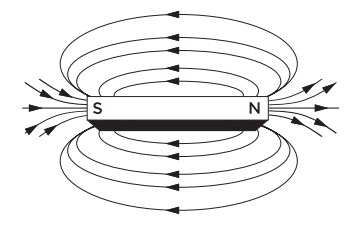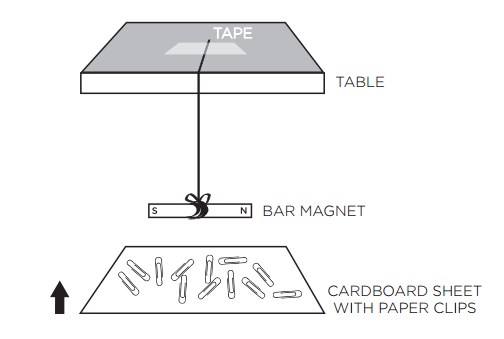In this activity, students use paper clips to find the parts of a magnet where the magnetic field is concentrated.
Magnetic field lines don’t exist physically — they’re a mathematical construct to help us visualise how magnets work. However, iron filings around a magnet will line themselves up along the field lines, so we can then see how the magnetic field “looks”.
Conventionally, we say that magnetic field lines leave the north end (pole) of a magnet and enter the south end (pole) of a magnet. The forces of a magnet are strongest at the poles. This is because the magnetic field tends to be concentrated at the poles (and spread out and bulging between them).


